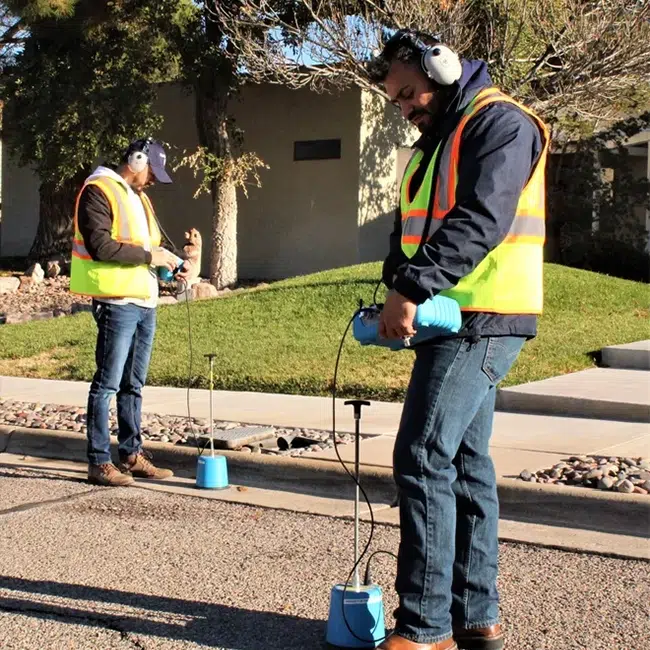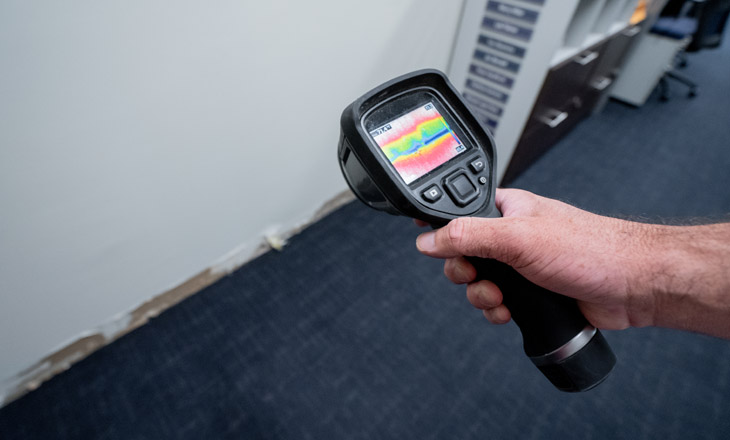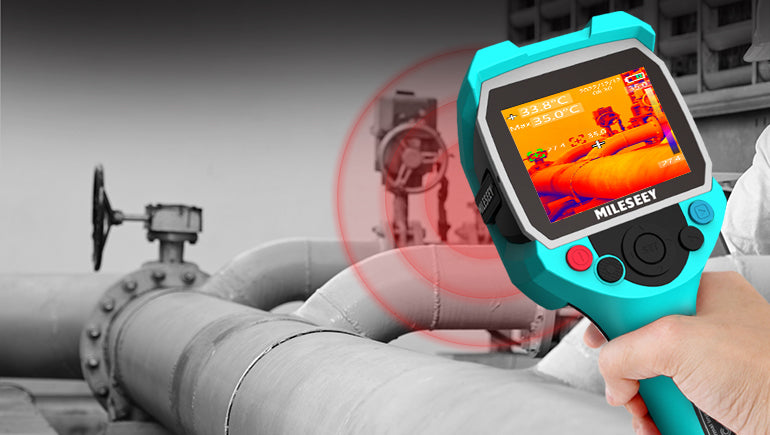Prevent Major Issues with Very Early Water Leak Detection and Trigger Services
Prevent Major Issues with Very Early Water Leak Detection and Trigger Services
Blog Article
Ingenious Solutions for Early Detection of Water Leakages in Structures and Infrastructure
As the honesty of buildings and infrastructure is vital, the difficulty of early detection of water leaks has actually spurred cutting-edge services that assure to revolutionize the means we guard versus prospective problems. From innovative leakage detection technologies to the release of IoT sensing units for real-time tracking, the landscape of leak avoidance is progressing rapidly. Artificial intelligence algorithms provide a peek into the future of leakage prediction, while thermal imaging provides a non-intrusive technique for determining hidden leakages. Automated water flow evaluation systems are reshaping how leaks are determined and resolved, leading the way for a proactive technique to water leakage detection. Each of these solutions holds the crucial to making certain the integrity and durability of our built atmosphere, prompting a change towards a much more lasting and effective future.
Advanced Leak Detection Technologies
Advanced leakage detection innovations, furnished with innovative sensing units and algorithms, play a vital function in quickly recognizing and pinpointing water leaks in numerous setups. These modern technologies utilize a combination of acoustic, thermal, and electro-magnetic sensing methods to discover leaks accurately. Acoustic sensing units find the noise of running away water, allowing for specific localization of the leak source. Thermal imaging identifies temperature changes created by water leak, supplying an additional efficient technique for leakage identification. Electro-magnetic sensors can recognize adjustments in electro-magnetic fields triggered by water, offering yet an additional layer of leakage detection capacity.

IoT Sensors for Real-Time Monitoring
In the realm of contemporary water leakage discovery, the integration of IoT sensing units for real-time surveillance stands for a pivotal improvement in boosting positive leakage discovery abilities. These sensing units use constant surveillance of water supply, giving real-time information on water circulation rates, stress variations, and temperature changes. By leveraging IoT innovation, these sensors can find also the tiniest anomalies in water usage patterns, allowing early identification of potential leakages prior to they rise right into major concerns.
IoT sensors transmit information to a central system, where sophisticated algorithms evaluate the info and generate alerts or alerts when abnormalities are identified. This real-time surveillance capacity enables building proprietors or center supervisors to quickly deal with leaks, minimizing water damages, minimizing repair costs, and preserving water resources.
Furthermore, IoT sensing units can be incorporated with structure administration systems, allowing for automatic feedbacks to detected leakages, such as shutting off water valves or turning on pumps to alleviate the influence of leaks. On the whole, the execution of IoT sensing units for real-time tracking considerably boosts the effectiveness and effectiveness of water leakage detection in buildings and framework.
Maker Knowing Algorithms for Leakage Prediction

One secret benefit of making use of equipment understanding for leak prediction is its capacity to constantly learn and boost its you can try these out accuracy over time. As even more data is collected and fed right into the algorithm, it can refine its forecasts and adapt to transforming problems, eventually enhancing the dependability of leak discovery systems.
Furthermore, artificial intelligence algorithms can assist in identifying subtle indicators of leaks that might go unnoticed by typical monitoring approaches. resource water leak detection. By evaluating intricate information embed in real-time, these algorithms can give early cautions and alerts, enabling prompt intervention and preventative upkeep to reduce prospective water damage and associated expenses
Making Use Of Thermal Imaging for Leak Discovery
Thermal imaging innovation uses an encouraging approach for finding water leakages in numerous systems and frameworks. By making use of infrared radiation and temperature level differences, thermal imaging cameras can identify hidden leakages that are not quickly visible to the nude eye.
One of the essential advantages of thermal imaging for leak detection is its non-intrusive nature. Unlike traditional techniques that might call for damaging right into wall surfaces or floorings to find leakages, thermal imaging permits non-destructive testing. This not only conserves time and lowers prices but also minimizes disturbance to the structure or framework being examined. Additionally, thermal imaging can rapidly scan big locations, giving a comprehensive overview of possible leakage sources in a timely fashion. Generally, using thermal imaging technology improves wikipedia reference the effectiveness and accuracy of water leakage detection, making it an important tool for keeping the stability of buildings and frameworks.
Automated Water Flow Evaluation Systems
How can computerized water flow evaluation systems transform the discovery and administration of leaks in different systems and infrastructures? Automated water circulation evaluation systems use an aggressive strategy to leak discovery by constantly keeping track of water circulation prices and patterns. By developing baseline information, these systems can quickly determine deviations that might show a leak, enabling timely intervention to protect against comprehensive damages.
These systems utilize sophisticated formulas to analyze real-time data and give prompt notifies when abnormalities are spotted, permitting speedy action to be taken. Furthermore, automatic water circulation evaluation systems can be integrated with structure management systems or IoT platforms, improving general performance and enabling remote tracking abilities.
Furthermore, the information accumulated by these systems can be utilized for predictive maintenance purposes, helping to determine possible weak factors in the framework prior to leakages happen. In general, the application of automated water flow evaluation systems can dramatically boost leakage discovery and administration practices, ultimately bring about set you back financial savings, lowered water wastage, and increased sustainability in structures and framework.

Final Thought
In verdict, the integration of innovative leakage detection modern technologies, IoT sensors, device knowing algorithms, thermal imaging, and automated water flow analysis systems supplies cutting-edge solutions for early discovery of water leakages in structures and framework. These modern technologies make it possible for real-time surveillance, prediction of leaks, and effective detection methods to stop water damage and wastage. Implementing these solutions can aid in keeping the stability and sustainability of water supply in different settings.
Report this page